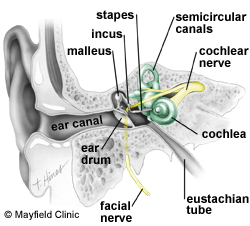Before an audiometric test
Before an audiometric test, it’s important that you and your employees are made aware of a few things to best ensure you get the most accurate hearing test results. An audiometric test, more commonly known as a hearing test, is simple and painless.
Employee audiometric testing
Employee audiometric testing is one of the important strategies for managing the risk of Noise Induced Hearing Loss (NIHL) in a noisy workplace. Measuring the noise exposure hazard is another. (See more on Noise Surveys)
An (air conduction) hearing test for work purposes can take as little as 10 minutes. It simply requires the individual to focus and respond to a series of tones as heard through special headphones.
Preparing for your hearing test
An audiometric test aims to find your “threshold” of hearing across a number of frequencies (tones). To get a true indication of your hearing ability, you need to be ‘at your best’ during the test. It is commonly understood that exposure to loud noise over long periods of time can permanently decrease your hearing capacity.
Ear wax
Also commonly known is that ears produce a waxy substance. Less commonly known is that for some people this wax can build up and block the ear canal reducing sound reaching the eardrum and therefore decreasing your hearing capacity. An important step in preparing for an audiometric test is to ensure your ear canals are not blocked.
For most people, wax is directed from the ears naturally or can be washed from the ears in the shower. More stubborn wax can be broken down by simple-to-use “drops” purchased from your pharmacy. But, sometimes the wax is so compacted that a doctor is required to “syringe” the wax from the ears.
If this could be you, then at least 2 days before your audiometric test you should have your ears cleared of wax.
Head Cold

Your hearing mechanism includes a series of bones and a tympanic membrane (ear drum) that vibrate when exposed to noise. That means, before an audiometric test the ear canal and the middle ear need to be clear. Illness that causes mucus build-up in the middle ear, such as is experienced with a “head-cold”, can reduce the normal vibration of the ear drum and bones. This can temporarily reduce hearing capacity.
If you have a cold, before your audiometric test let your supervisor know you are unwell. You should also inform the audiometric officer on the day of your hearing test.
So, before an audiometric test:
- Have your ears cleared of wax at least 2 days before your hearing test
- For 16 hours before your hearing test avoid exposure to loud noise (eg. anything louder than a domestic vacuum cleaner) that lasts more than a few minutes.
- Try to be free of illness that includes mucus build-up in the middle ear (eg. a head cold or flu)
If you are having an audiometric test and you have a question please feel free to contact us.
Work Health Professionals specialise in onsite audiometric testing around Perth and regional WA, and we can help you and your employees to be at their best before an audiometric test.
